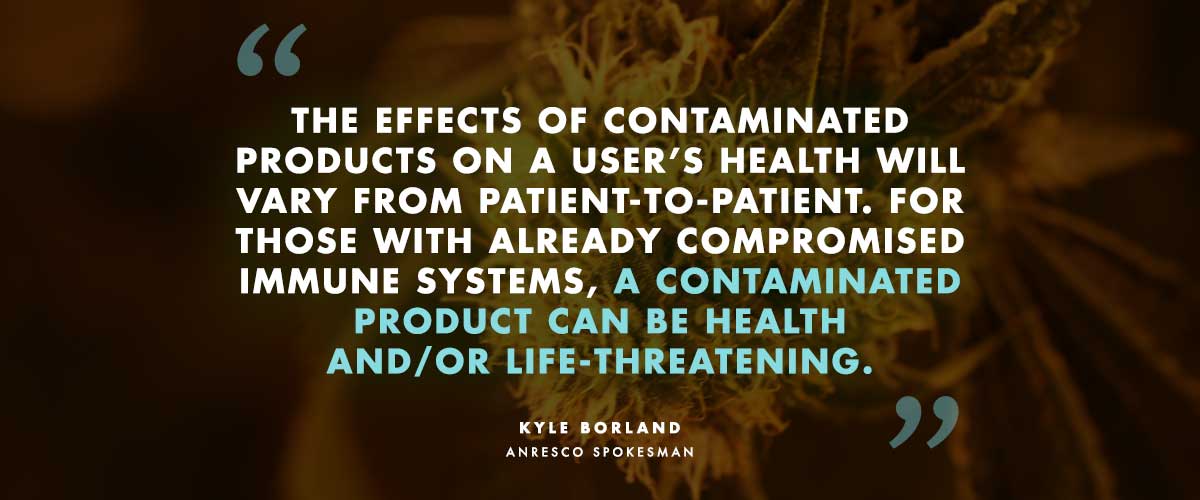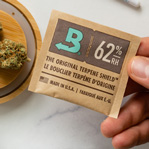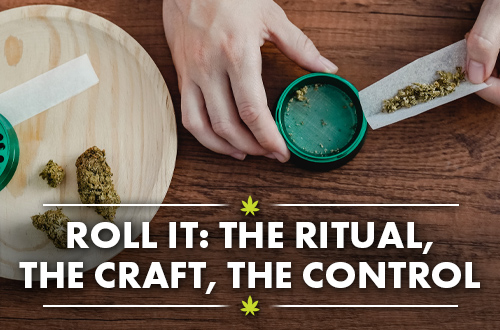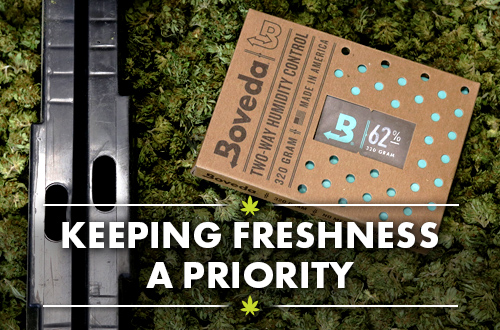Moldy marijuana isn’t safe to consume or smoke. Firing up moldy cannabis distributes—doesn’t destroy—mold spores. Trimming off the mold from your MJ doesn’t fully eliminate the danger either. When in doubt, throw it out. (Or better yet, use humidity control in cannabis storage to avoid the mold problem in the first place. )
Mold is one of mankind’s biggest enemies. There are several different types of mold, many of which can make food unsafe to eat and homes uninhabitable. Depending on the type of mold present and the length of exposure, effects may be mild to severe, and can include coughing, trouble breathing, headaches, vomiting, diarrhea, heart palpitations, and infections in the lungs. People with asthma or compromised immune systems are most likely to be affected by mold, and could potentially lead to death.
Cannabis, just like any other type of produce, has the potential to develop mold. While some cases do appear in the cultivation process, the majority come after harvest—during drying or curing or in cannabis storage—if moisture levels are too high. Although most cultivators know how to prevent mold growth in cannabis, that doesn’t mean that every crop is perfect. Additionally, if an end user doesn’t keep cannabis in a cool, dry place, that stash could also be at risk.
Even When it’s Legal, Can You Be Sure that Cannabis is Mold Free?
Cannabis is legal in 11 states for adults over 21 and legal for medical use in 33 states. Each state makes its own rules to regulate cannabis. Because there is no across the board standard, testing for mold and other pathogens can be inconsistent. For example, California currently doesn’t have strict statewide testing standards for its medical cannabis. That changed in January 2018, when the plant became legal for adult use.
In August 2017, Anresco Laboratories tested several cannabis plant, extract and edible samples, all from the Bay Area. The results, first reported by San Francisco Magazine, were shocking. Nearly 80 percent of the marijuana samples tested positive for some type of pathogen; 15 percent tested positive for mold.
“We weren’t entirely surprised given the unregulated nature of the market for so long,” Anresco spokesman, Kyle Borland said. He added that while it cannot be certain that this round of testing was representative of the California industry as a whole, the results were still concerning.

Mold can also cause substantial financial losses for cannabis companies. Should a marijuana sample test positive, the entire batch may have to be destroyed. Because marijuana is still illegal at the federal level, many growers do not have proper insurance to cover these losses. This is why cannabis farmers strive to prevent mold in the first place.
“Come 2018 in California, the economic impact will be huge,” Borland said. “A contaminated product will not be allowed into the legal marketplace, up to certain levels that we are still waiting to be determined by the state. If a crop/product fails a lab’s analyses in 2018, it could throw their whole supply chain into a spiral. Currently, contaminated products garner less of an asking price and many businesses have already begun denying tainted products.”
How to Spot Mold on Cannabis
There are several ways to detect mold. In addition to professional lab testing, a visual inspection under UV light can be conducted. Signs of mold can include black, grey, white, brown or yellow spots, spores, fuzz or webbing. For consumers who may have had their medicine in cannabis storage long-term, it’s important to do a quick mold check before consuming in case of any developments.
Signs of Moldy Cannabis:
- Dampness
- Musty, sweet, and stale odor
- Grey or white fuzz
- Specks of white powder, like white dust
Is This Mold on My Marijuana?
If you notice tiny white or cream-colored mushrooms on your buds, those are trichomes, not mold. Trichomes are concentrated with THC and other psychoactive cannabinoids. Boveda preserves trichomes by preventing them from drying up and breaking off while inhibiting mold growth. If there is fuzzy white stuff growing ON your trichomes, that’s mold. Mold fibers are much smaller than trichomes.

How to Prevent Mold on Marijuana
As mentioned earlier, flower can develop mold throughout various points of its life cycle. When the plant is drying and curing, having a well-ventilated space with plenty of fans is essential. Once the plant is dried, it’s important to keep cannabis stored in an airtight container in a cool, dry place. To keep cannabis safe, both producers and consumers rely on Boveda, the original terpene shield. Boveda slips right in with buds to lock in a precise relative humidity level that’s perfect for flower. Boveda adds just enough moisture to help cannabis retain its therapeutic benefits while absorbing excess moisture to prevent mold.

Moldy cannabis can be extremely dangerous–especially for medical patients with compromised immunity. Therefore, it’s vital that all medicine be tested and stored properly for protection against any and all pathogens.

By Rachelle Gordon
www.RachelleGordon.net
Rachelle Gordon is a Minneapolis-based freelance writer and educator in the cannabis space. She has dedicated herself to informing others about the powers of plant medicine after witnessing her father’s struggle with epilepsy (and subsequent stroke) in her childhood.
Rachelle’s posts are being provided for informational purposes only; they do not constitute an endorsement or an approval by Boveda of any of the products, services or opinions of Rachelle. Boveda bears no responsibility for the accuracy, legality or content of this post or links to the posts. Contact Rachelle Gordon for answers to questions regarding her content.








